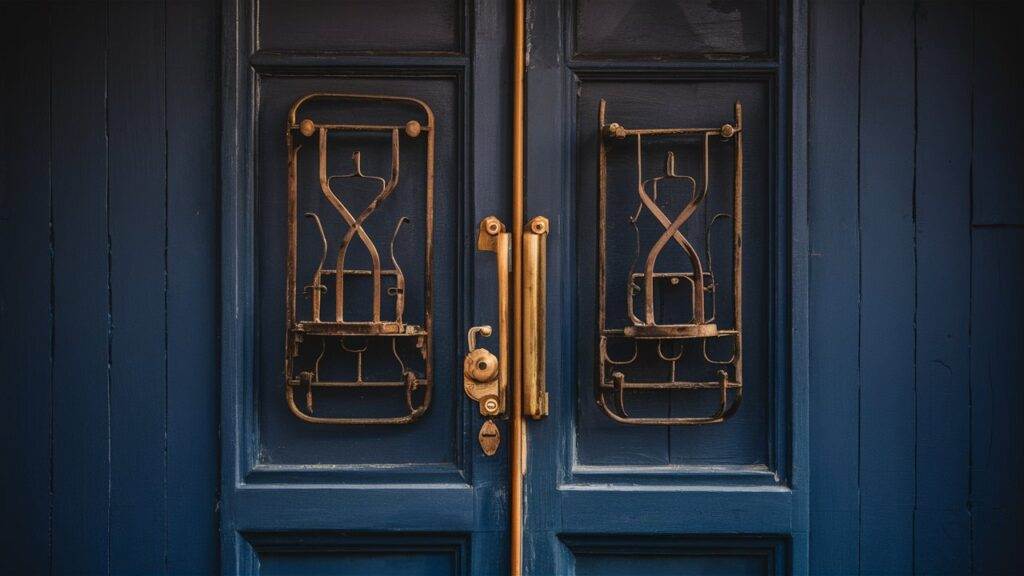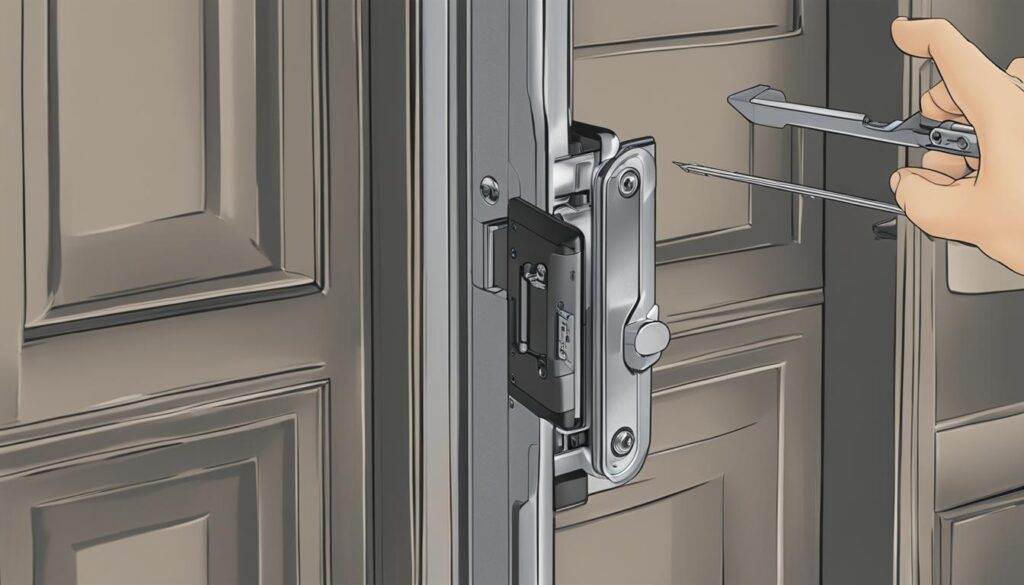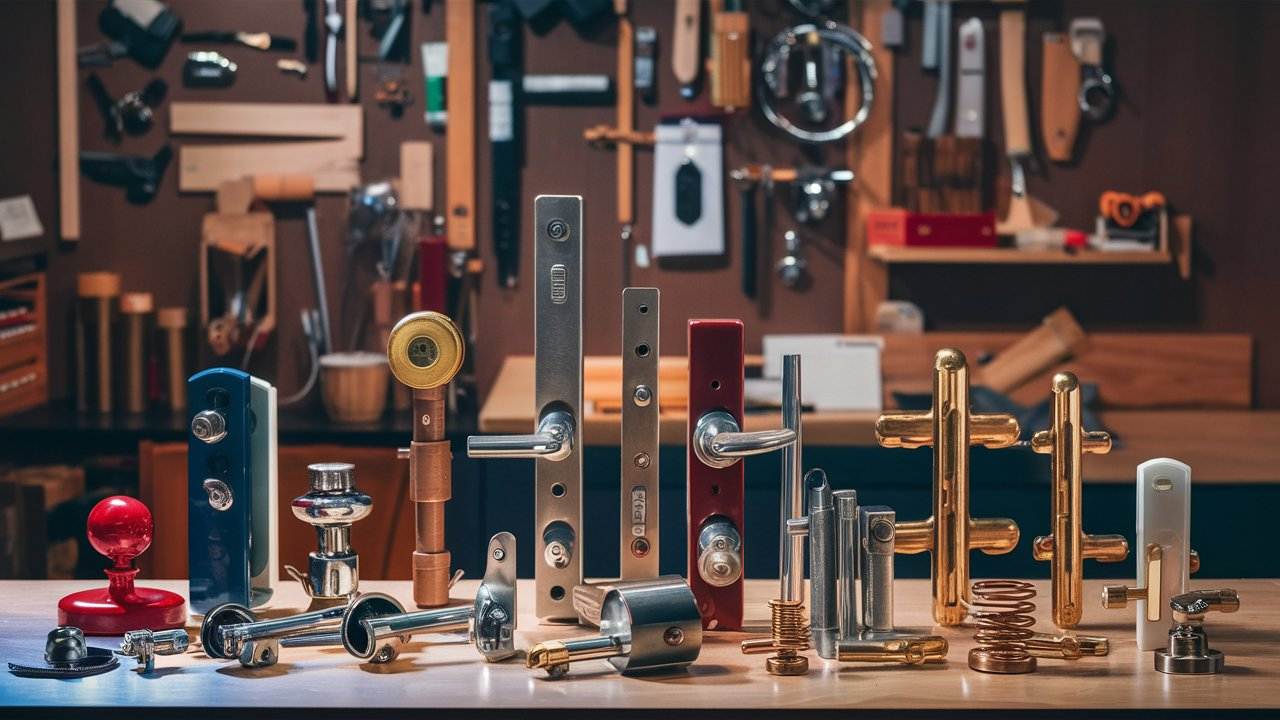Explore various types of door closing devices suited for different door types, ensuring you select the right commercial door closer. This guide covers everything from basic door closers to advanced commercial door closing devices, helping you make an informed decision.
Understanding Door Closing Devices
Importance of Door Closing Devices:
Door closing devices are really important in homes and businesses. They help keep doors closed securely, which is key for safety and security. These door control devices prevent unauthorized entry, making them essential for protecting people and property.
Besides safety, door closing mechanisms also save energy. When doors close properly, they stop drafts. This means your heating and cooling systems don’t have to work as hard, helping you save money on bills.
In commercial spaces, fire safety is a big deal. Fire-rated door closers are specially designed to keep areas sealed during emergencies. This helps with safe evacuation while stopping smoke and flames from spreading. Knowing about these devices is important for managing buildings well and following safety rules.
Types of Door Closing Devices:
There are different types of door closing devices available today, each one works in its own way:
- Hydraulic Door Closers: These use hydraulic fluid to control how fast a door closes. They’re popular in busy places because they’re tough and reliable. You can adjust the speed too, which makes them great for high-traffic areas.
- Pneumatic Door Closers: These work using air pressure and are often used in lighter applications or homes where noise matters more. They tend to be quieter but might not handle heavy use like hydraulic ones do.
- Electromagnetic Door Closers: These connect with fire alarm systems to hold doors open normally but close them automatically when there’s an emergency. This feature is super important for keeping people safe when there’s a fire risk.
- Spring-Loaded Door Closers: These are simpler; they use springs to make sure doors close after being opened manually. While they might not have the same control as hydraulic or pneumatic options, they work well in low-traffic areas.
By knowing about these different types of door closing devices—from hydraulic to electromagnetic—you can choose the right one that fits your needs best! Each type has its strengths depending on how busy the area is and what safety features you need.
Selecting the Right Door Closer for Your Needs
When picking a door closer, there are some key things to think about. First off, check the door size and weight. If your door is heavy, you might need a stronger option like hydraulic or heavy-duty door closers. This helps make sure the door works smoothly and lasts longer. Next, think about how often the door will be used. Doors that get opened a lot need durable options made for high traffic areas. These types can handle constant use without breaking down.
Also, look at the environment and safety requirements. For example, if you’re in a commercial building, you might need fire-rated door closers to meet safety rules. By keeping these factors in mind, you can choose a door closer that fits your needs while also boosting safety and function.
Door Closer Types for Different Situations
Surface-mounted Closers
Surface-mounted closers go right on the surface of the door frame. They come in different styles:
- Regular Arm Door Closers: These are pretty standard and easy to set up.
- Parallel Arm Door Closers: They sit flush against the frame for a nicer look.
- Transom-mounted Overhead Door Closers: Great for doors with little space above them; they work well without blocking anything overhead.
Each type has its perks based on where and how you want to install it.
Concealed Closers
Concealed closers hide their mechanism inside the frame or floor, giving a clean look. Here are some options:
- Overhead Concealed Closers: Mounted above but out of sight; they keep things looking neat while working well.
- Jamb-mounted Door Closers: These fit into the side of the frame so they’re less visible.
- Floor Springs: These go into the floor and don’t mess with how things look; they’re perfect for fancy setups.
These types are especially good when appearance matters.
Advanced Features
Modern door closers often have cool features that make them even better:
- Smoke and Fire-rated Closers: These help meet safety standards while ensuring doors close properly during emergencies.
- Adjustable Closing Speed and Latching Force: You can tweak this based on how busy an area is or what users prefer. This means doors won’t slam shut but still latch securely.
- Electromagnetic Hold Open Door Closer: This keeps doors open until someone closes them or there’s a fire alarm; it’s super handy in places where easy access is needed.
When picking out your door closer—whether it’s surface-mounted or concealed—remember to think about size, usage frequency, and those extra features to make sure you get what works best for you!
Installation and Maintenance
Proper Installation:
When you think about door closer installation, it’s super important to do it right. First off, pick the right type of closer for your door’s size and weight. If you’re going with surface-mounted door closers like regular arm or parallel arm models, make sure to follow the manufacturer’s instructions closely. This will help your door work better.
If you choose concealed options such as overhead or jamb-mounted door closers, get the installation area ready first. Everything should be level and firmly attached to prevent any future problems. And if you’re using floor springs, make sure they’re set up so they don’t block the door’s movement.
Routine Maintenance:
Maintaining door closers is key for keeping them working well for a long time. Plan to check on them every few months to look for wear and tear. For surface-mounted models, check for rust or damage; with concealed units, ensure they’re working smoothly without anything in the way.
Lubrication of door closers should happen regularly with a silicone-based lubricant. This helps avoid sticking and keeps noise down during use. Sometimes you’ll need to make adjustments too, like tweaking the closing speed or latching force, which can really improve how your door works.
Troubleshooting Common Problems:
Troubleshooting door closers can fix many common issues quickly. If doors are closing slowly, check if adjustments are needed or if something is blocking their path. For sticking problems in door closers, take a look at the mounting hardware and add lubrication where necessary.
For noisy operation from your door closer, misalignment or lack of lubrication might be the culprits; fixing these can boost performance significantly. By staying ahead of these issues through troubleshooting, you’ll keep your chosen types of door closing devices running smoothly over time.
By focusing on proper installation techniques, regular maintenance practices, and effective troubleshooting methods, you can really enhance both how well your door closing devices work and how long they last!

Door Closer Technologies for Enhanced Security and Convenience
Electromagnetic Hold Open
Electromagnetic hold open door closers are smart devices that mix the usual door closer functions with electromagnetic technology. These closers let doors stay open during regular use but will shut automatically if a fire alarm goes off or there’s a power outage. This is super important for keeping safety standards in commercial buildings, where rules say doors must close on their own during emergencies.
When picking an electromagnetic hold open door closer, think about the door’s weight and size, how often it will be used, and if it meets local fire codes. Brands like ARROW and Dorgard have various options to fit different needs, ensuring both security and convenience.
Motion Sensors
Adding motion sensors to door closing devices makes things easier and more accessible. These systems sense movement, allowing the door closer to activate without anyone needing to touch it. This feature is especially helpful in busy areas or for people with disabilities who might struggle with traditional doors.
It’s key to place motion sensors correctly so they don’t trigger by accident while still working well. Regular maintenance is also necessary to keep these systems running smoothly. Using motion sensor technology can create a friendlier environment in homes or businesses.
Remote Control
Remote control features bring extra convenience for those managing multiple doors or needing quick access without using their hands. Electronic door closers that come with remote controls let users open or close doors from afar, which improves accessibility in many settings.
When using remote-controlled systems, it’s wise to think about security features to stop unauthorized access. Some advanced models from brands like GEZE include smart home technology that allows easy control through mobile apps. This modern twist not only boosts convenience but also fits right into today’s smart living trends.
Advanced Features Overview
Modern door closing devices are loaded with advanced features aimed at better performance and safety. One important feature is adjustable closing speed; this lets users set how fast a door closes based on its surroundings—especially useful in busy spots where quick closures could be dangerous.
Also, many of these closers are fire-rated, meaning they follow safety regulations while giving peace of mind during emergencies. Knowing about these advanced features can really help you choose the best door closer for your situation.
In short, looking into technologies like electromagnetic hold opens, motion sensors, and remote control options offers great insights into improving both security and convenience through effective door closing solutions.

Future Developments and Trends
As technology changes, the door closing industry is seeing some cool new stuff. From smart door closers to eco-friendly materials, these trends make life easier, safer, and more efficient in many places.
Smart Door Closers
Smart door closers are becoming popular in homes and businesses. These automatic door operators work well with smart home systems. You can control your doors from your smartphone, which makes it easy to keep an eye on who’s coming and going. Plus, you can adjust how fast or slow the doors close. This flexibility means electronic door closers fit into all kinds of spaces, boosting both safety and convenience.
Biometric Access Control
Biometric access control is changing how we secure our spaces. Advanced door closers that use biometric sensors make sure only the right people can enter sensitive areas. They can read fingerprints or even recognize faces! This tech not only boosts security but also speeds up access in busy spots where traditional keys or cards just don’t cut it.
Self-Closing Doors with Advanced Materials
New materials are helping create self-closing doors that last longer and meet fire safety standards. These doors use strong materials like fiberglass and stainless steel to handle wear while keeping everyone safe from fires. The focus on innovative door materials also helps save energy, so buildings run better over time. Durable door closers are key to making sure these systems stay effective.
Integration of Motion Sensors
Motion sensors are now a common feature in modern door closure systems. They allow for hands-free operation, which is super helpful in places where people might have their hands full—like restaurants or shops! Automatic closing doors with motion sensors also follow ADA rules, making them easier for everyone to use without touching handles or knobs.
Sustainability in Door Closing Devices
Sustainability is a big deal when designing door closing devices today. Companies are working hard to create energy-efficient solutions that help lower costs over time. Using environmentally friendly materials for doors not only helps the planet but also attracts consumers who care about green practices when they shop.
In short, keeping up with these trends will help you pick the right type of door closer that fits your needs while staying aligned with new technology and sustainability goals.

